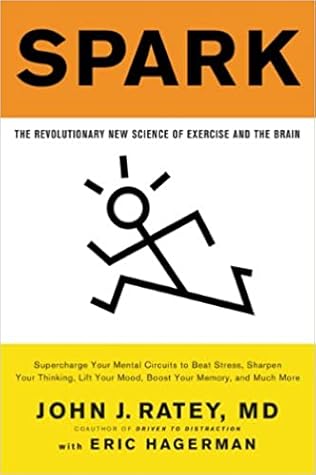More on this book
Community
Kindle Notes & Highlights
It can also be dicey, she points out, to suggest exercise to a woman who’s juggling so many new responsibilities and might not be feeling so hot about her body. “The first thing to drop off the list when life gets more complicated for women is exercise,” Shaw says. “I don’t think there’s an appreciation for what it does, but I do think it has a stabilizing effect on mood.”
(the median age for menopause is fifty-one),
The great value of exercise for women beyond menopause is that it helps balance the effects of diminished hormones,
it protects against cognitive decline.
From an evolutionary perspective, exercise tricks the brain into trying to maintain itself for survival despite th...
This highlight has been truncated due to consecutive passage length restrictions.
Several large observational studies, one of which included sixty-six thousand menopausal Italian women, have shown that lower levels of exercise correlate to more vasomotor symptoms, but other studies have shown no association.
Exercise sparks production of neurotransmitters and neurotrophins, creates more receptors for them in key areas of the brain, and turns on genes that keep the positive cycle spinning.
Wisdom, I think, is a reflection of how adept the brain is at compensating for this loss of efficiency. If the synaptic decay outpaces the new construction, that’s when you start to notice problems with mental or physical function, ranging from Alzheimer’s to Parkinson’s disease (depending on where the degeneration occurs).
The prefrontal cortex, which is the search engine for your memory, can’t call it up.
the prefrontal cortex and the white matter of its axons, and the temporal lobe, which catalogs words and proper names and helps form long-term memories through its tight connection to the hippocampus.
If the blood flow is cut off to the temporal lobe—the brain’s dictionary—you can speak but you can’t get the words right. If you have a stroke in the frontal cortex, you won’t be able to speak, but you can understand what people are saying to you.
Exercise counteracts the natural decline of dopamine, the key neurotransmitter in the motivation and motor systems. When you move, you’re inherently boosting motivation by strengthening the connections between dopamine neurons, while at the same time guarding against Parkinson’s. This really underscores the idea that if you’re not busy living, your body will be busy dying. It’s important to have plans and goals and appointments, and this is why sports such as golf and tennis are great. They require constant self-monitoring and the motivation to improve.
newly born stem cells to divide and become functional neurons in the hippocampus.
Low-carb diets may help you lose weight, but they’re not good for your brain. Whole grains have complex carbohydrates that supply a steady flow of energy rather than the spike and crash of simple sugars, and they’re necessary to transport amino acids such as tryptophan into the brain. As you learned in chapter 4, tryptophan is a precursor necessary for the production of serotonin, and it and other important amino acids come from protein.
“A little is good, and more is better.” The best, however, based on everything I’ve read and seen, would be to do some form of aerobic activity six days a week, for forty-five minutes to an hour. Four of those days should be on the longer side, at moderate intensity, and two on the shorter side, at high intensity. And while there’s conflicting evidence about whether high-intensity activity, which can force your body into anaerobic metabolism, impacts thinking and mood, it clearly releases some of the important growth factors from the body that build up the brain. So, on the shorter,
...more
But it seems to have the most dramatic impact on IGF-1, the evolutionary linchpin tying together activity, fuel, and learning. It gets into the very cell nucleus and switches on genes that crank up the mechanisms of neuronal growth. Psychologically, this is where you “confront the self,”
Two days a week, I started including a handful of sprints during my treadmill runs, and let me tell you, they hurt. Just writing about it makes me cringe a little, but it has been well worth the extra effort. After one month of this business, I lost the final ten pounds I’d been after for years—it peeled right off my midsection. Not that I was overweight.
When people want to know what to do if they’re short on time, I tell them this story. Although I’m almost sixty, I feel much younger, and if I could get Art Kramer to scan my brain, I’m sure it would look younger too. I’m doing everything I can to keep my prefrontal cortex, and everything it’s connected to, pumped up. I miss days, certainly, but I try not to miss two in a row.


